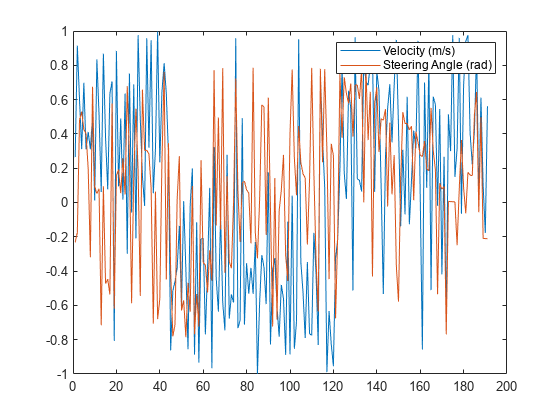navPathControl
Description
The navPathControl object stores paths that are typically created by
control-based path planners like the plannerControlRRT object. The
navPathControl object represents paths as a sequence of states, controls,
durations, and targets. This object associates each path with a specific state propagator,
which propagates the control commands to determine the resulting states.
This object specifies states and targets in the path in the state space of propagator. Controls are outputs from a controller that are used to update your systems state during propagation. This object applies each control for an associated duration. Controls can be reference signals or direct inputs to an integrator depending on your system design.
Creation
Syntax
Description
pathObj = navPathControl(propagator)propagator argument specifies the
StatePropagator
pathObj = navPathControl(propagator,states,controls,targets,durations)
Properties
Object Functions
append | Add states to end of path |
interpolate | Interpolate path based on propagator step size |
pathDuration | Total elapsed duration of control path |
Examples
Version History
Introduced in R2021b
![Figure contains an axes object. The axes object with title Occupancy Grid, xlabel X [meters], ylabel Y [meters] contains 4 objects of type image, line. One or more of the lines displays its values using only markers](../../examples/nav/win64/PlanKinodynamicPathWithControlsForMobileRobotExample_01.png)

![Figure contains an axes object. The axes object with title Occupancy Grid, xlabel X [meters], ylabel Y [meters] contains 4 objects of type image, line. One or more of the lines displays its values using only markers](../../examples/nav/win64/CombineTwoKinodynamicPathsWithControlsForMobileRobotExample_01.png)
![Figure contains an axes object. The axes object with title Occupancy Grid, xlabel X [meters], ylabel Y [meters] contains 4 objects of type image, line. One or more of the lines displays its values using only markers](../../examples/nav/win64/CombineTwoKinodynamicPathsWithControlsForMobileRobotExample_02.png)
![Figure contains an axes object. The axes object with title Occupancy Grid, xlabel X [meters], ylabel Y [meters] contains 4 objects of type image, line. One or more of the lines displays its values using only markers](../../examples/nav/win64/CombineTwoKinodynamicPathsWithControlsForMobileRobotExample_03.png)